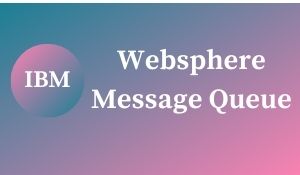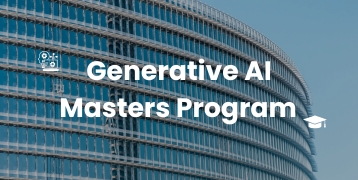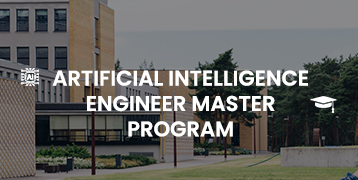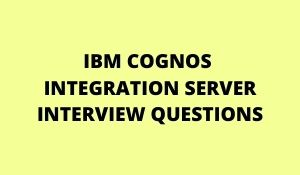
1.What is meant by the term MQ and what does it do?
MQ abbreviates Message Queuing. When it comes to message-driven processes, IBM enables users to simply keep up the pace with the WebSphere with which all application programs can simply be managed. There is no strict upper limit on the platforms when it comes to communicating and the good thing is a vast support is available from IBM to enable the users to manage everything simply.
2. What are the benefits that corporations can have through IBM Websphere MQ?
Organizations and corporations can simply send the bulk messages over complex networks. There are no strict protocols that need to be followed. Even if they are, the same can be managed very easily. Enterprises can make sure of quick information delivery to the destinations and can always have the things done in the best possible manner.
3.Suppose if you need to install the IBM Websphere MQ in Aix, what would be the requirements related to the software you need to fulfill?
The one and the only prime requirement is the machine should be of 32-bit OS. Although it works on 64-bit OS, it needs some customized settings. The Aix should be installed on it and there will be no corrupt files related to programming.
4.What do you know about the Message Driven Process?
A lot of messages arrive at the queue and especially when there is a lot of traffic. When such a thing happens, an automatic process that relates to the triggering starts. It is possible to stop the application with a simple instruction after it has done its work.
5. Is there any limit on the message length supported by the MQ in WebSphere?
Generally, the default length of a message is 4MB. However, it is not always necessary that all the messages should be of this size. In some special cases, it can be upto 100 MB. In case a message is too large in terms of size, the same can be divided into different parts and then these parts are sent in a sequence order. This approach is generally regarded as message switching.
6. In IBM WebSphere MQ, how you will define a message?
A message is basically considered as a string of bytes which contains something useful for the machine or for the user. Generally, messages are deployed when it comes to sharing information among different nodes. It doesn’t matter whether the application runs on platforms which are different from each other.
7.Does IBM Websphere MQ support Integration, if so, how can you say this?
Well, the fact is IBM Websphere MQ is totally independent of the OS one is using. The same factor makes it totally independent of the TCP/IP protocol as well. There are many instances when the messages don’t get delivered or get delayed just because of a sender and a receiver having an OS mismatch. This is actually not at all a big deal with the IBM Websphere MQ and users need not to worry about anything related to this.
8. What is packet lost in Messaging and how does the receiver know which packet is not received by it?
Packets are the sub-parts of a message that needs to be sent from a sender to a receiver. Sometimes a situation arrives when a packet doesn’t reach its destination. Because all the packets have a well-defined address on them, the receiver can understand and acknowledge which message has been lost.
9. What do you mean by Asynchrony in IBM Websphere MQ?
In the queue process, the process of sending or exchanging any message doesn’t depend on the time. This is exactly what that makes both the sender, as well as the receiver to be decoupled if the need of same is there. There is actually no need for the sender to wait for getting the acknowledgment regarding the delivery of the message from the receiver. IT can continue with this next task. This process is basically considered as Asynchrony in IBM Websphere MQ.
10. What do you know about the persistent and non-persistent messages?
In WebSphere MQ two types of messages exist. They are basically classified based on priority. The messages which are urgent and should be recovered in all the circumstances are called persistent messages. Others are non-persistent messages. This clearly indicates that the persistent messages are always delivered to the destination. Users can define any message as persistent. It should be kept in mind that there is a limit on the number of attempts that sender makes for the delivery in case anything goes wrong.

11. What do you mean by the Application data in the IBM Websphere MQ message?
It is necessary to define the structure of an application data that needs to be used in a message. Applications programs make sure of this and this practice is followed in all the messages. This data is generally considered as application data.
12. What do you mean by message descriptor?
A massage doesn’t just contain information that needs to be transferred but it contains other information too. For example, type of message and what exactly its priority is. The same is described in the message descriptor which is defined by WebSphere MQ. It contains all other relevant information about the message and among all of the same, its priority that largely matters.
13. In message switching, what is the sub-part of a message is called as? What if it gets lost?
They are known as packets and packets in most of the cases are the same size. Because they all belong to the same message, the information format is similar. They can choose any path that exists between the sender and the receiver and this is exactly what can sometimes result in packet loss. Although its priority is very low, in case it happens, the receiver can send the acknowledgment to the sender that it has not received a specific packet. The sender then has to resend the same to it.
14. What do you understand by the term congestion control?
Well, the fact is sometimes there are so many messages on a network. The channel has its own limit of processing the data and when the same exceeds, the situation is considered as congestion. It is similar to a traffic jam on a road. The clearance needs time and so do the messages get a bit delayed for delivery.
15. In IBM Websphere MQ, what is an MQ client and how is it different from an MQ server?
Many times there is a need to issue MQI calls to a queue manager. IT is not always necessary that it runs on the same system. MQ client is responsible for issuing the same for an application. The output can be modified up to some extent. On the other side, the MQ server is basically a manager for the queue which is responsible for offering the queuing service to the clients. All the objects which are classified in the MQ appear only on the server and not on the client’s machine.
16. Name the different objects that are used in the WebSphere MQ?
These are Channels, Processes, Queue Manager, Name Lists and Processes. All these objects can have a similar nature or a different one depending on the operation they are engaged in.
17.Explain the Concept of Switching?
In a network, there can be a very large number of nodes. Practically it is not possible to establish a direct physical connection between them all. Of course, this can enhance the cost up to a great extent and can make the network very complex. Thus, the concept of switching is considered. It basically acts as a temporary path that is established between a sender and a receiver for message transfer. The connection is terminated after the message is sent. Because not all the nodes need channels all the time, this concept can be applied. It has a lot of advantages. All the data that seems to be sent on priority can be assigned immediately by stopping other operations.
18. What is the difference between the control commands and the MQS commands?
Control commands are used when it comes to managing the services, as well as different processes related to messaging. Most of the time, these commands are deployed for the channel listener, triggering or for the integration of the same. On the other side, the MQS commands are useful when it comes to functions which are related to the tasks performed by an administrator. It is also possible to create Queue Managers and channels through these commands.
19. Mention the top features of MQ you are already familiar with?
Well, they are Assured Delivery, Integration, Scalability, and Asynchrony. Although in few cases it consumes time depending on the exact message in the queue, the delivery is always assured. Users can check the status of all the messages simply anytime they want.
20. After creating the Queue Manager, where can you find the Backup files? Can its location be changed?
The same is present in a folder which is named as Windows Registry and is present in the Window’s Program Files. Yes, it is possible to change its location and users can store the backup data anywhere they want.
21. What are the Telemetry capabilities you are familiar with?
Telemetry allows the remote sensors to be connected with a node. When it comes to optimizing the sensor networks, it’s telemetry that provides optimization techniques. In satellite networks, it can help save a lot of cost simply.
22. What exactly do you know about the MQ series?
It can hold messages with multiple formats as well as maintaining the objects like channels and Queues is their responsibility. It is also possible to define the queues in the JEE container simply with the help of this series.
23. What is MQ and what does it do?
MQ stands for MESSAGE QUEUEING. WebSphere MQ allows application programs to use message queuing to participate in message-driven processing. Application programs can communicate across different platforms by using the appropriate message queuing software products.
24. What are the benefits of the MQ?
•Integration
•Asynchrony
•Assured Delivery
•Scalability.
25. How does it support the Integration?
Because the MQ is independent of the Operating System you use i.e. it may be Windows, Solaris,AIX.It is independent of the protocol (i.e. TCP/IP, LU6.2, SNA, NetBIOS, UDP).It is not required that both the sender and receiver should be running on the same platform.
26. What is Asynchrony?
With message queuing, the exchange of messages between the sending and receiving programs is independent of time. This means that the sending and receiving application programs are decoupled; the sender can continue processing without having to wait for the receiver to acknowledge receipt of the message. The target application does not even have to be running when the message is sent. It can retrieve the message after it has been started.
27. What is the Max Length of the message does MQ support?
The default maximum message length is 4 MB, although you can increase this to a maximum length of 100 MB (where 1 MB equals 1 048 576 bytes).
28. What is the difference between Persistent and Non Persistent Messages?
In Web Sphere MQ, messages can be either persistent or non persistent. Persistent messages are logged and can be recovered in the event of a WebSphere MQ failure. Thus, persistent messages are guaranteed to be delivered once and only once. Non Persistent messages are not logged. Web Sphere still guarantees to deliver them not more than once, but it does not promise to deliver them once.
29. What is the effect of using Persistent messages?
Persistent messages are usually logged. Logging messages reduces the performance of your application, so use persistent messages for essential data only. If the data in a message can be discarded if the queue manager stops or fails, use a nonpersistent message.
30. What is an MQ Client?
A Web Sphere MQ client is a component that allows an application running on a system to issue MQI calls to a queue manager running on another system. The output from the call is sent back to the client, which passes it back to the application.

31. What is MQ Server?
A Web Sphere MQ server is a queue manager that provides queuing services to one or more clients. All the Web Sphere MQ objects, for example queues, exist only on the queue manager machine (the Web Sphere MQ server machine), and not on the client. A Web Sphere MQ server can also support local Web Sphere MQ Applications.









